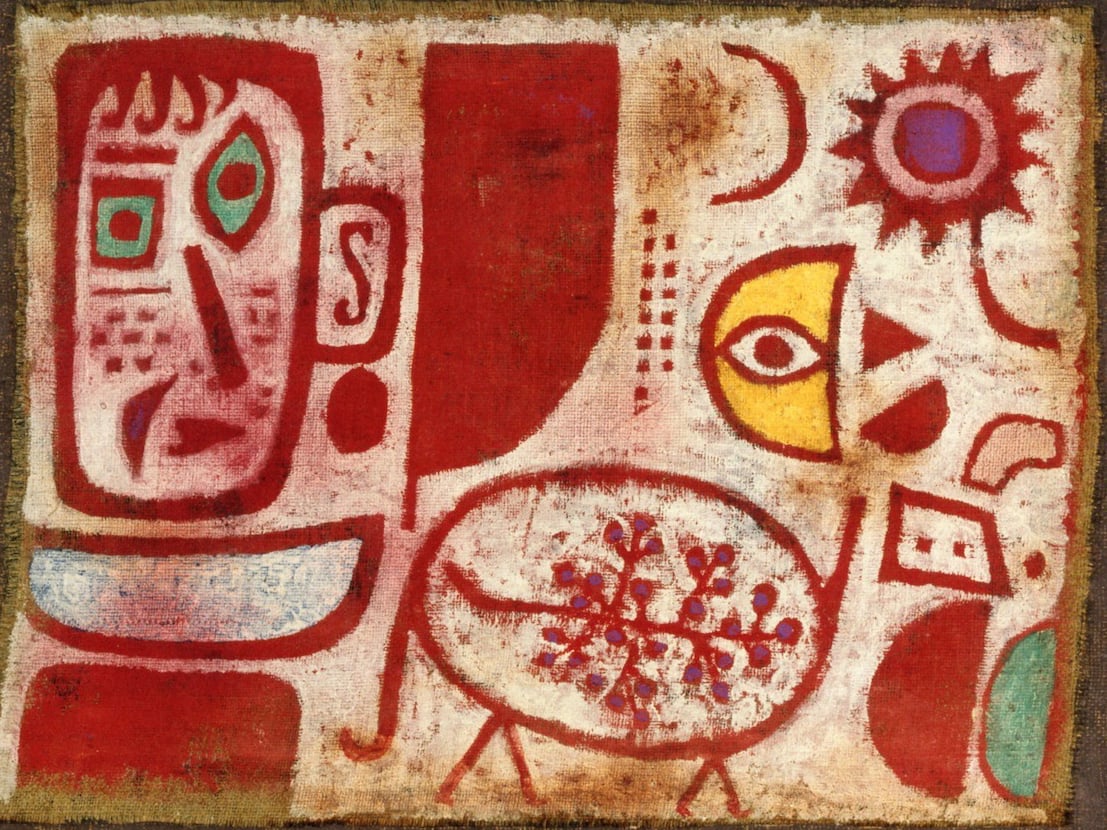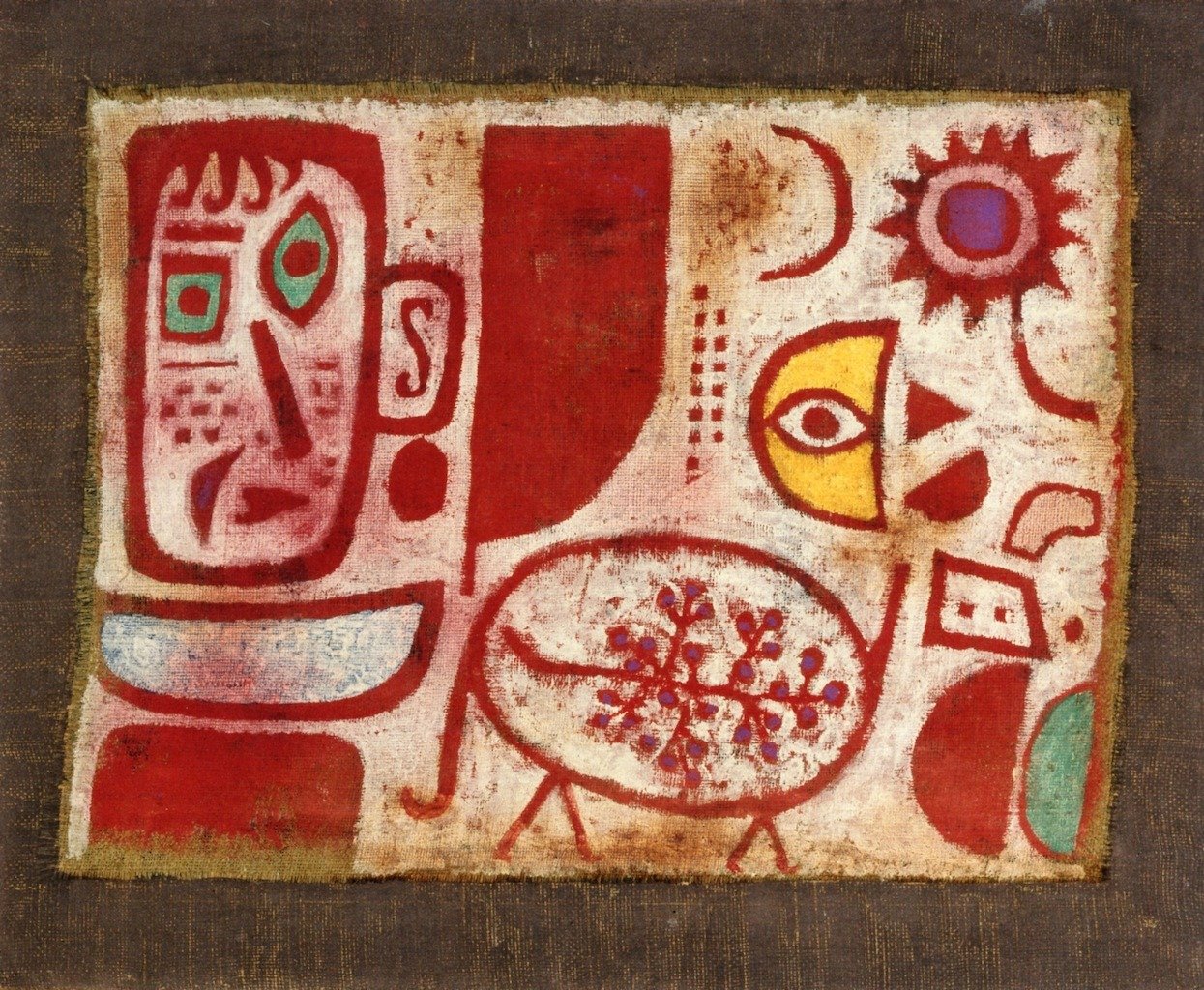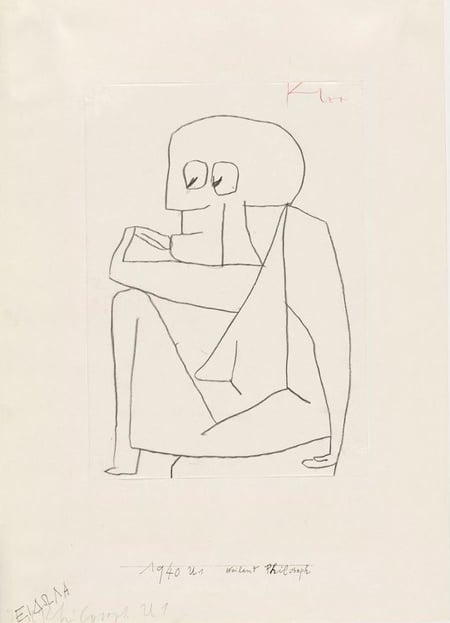Ex-Cannibalism and Its Discontents
by Friedrich Hansen (November 2017)

Frenzy/Raush or Intoxication, Paul Klee, 1939
The discrimination between sin and sinner is the mother of all separations and the premise for atonement. The inner moral dualism which allows the self to choose right over wrong depends on a switch of perspective in the human mind. It represents the cardinal accomplishment of guilt culture consisting of the monotheist algorithm for repentance which is instrumental for acknowledging our wrongs in order to overcome them. After all, atonement is an inescapable personal way for embracing a change for the better, earning us redemption. It is for this reason that a frank rejection of this venerable institution by sexual identity politcs represents a break up of Western civilization, the Judeo-Christian culture of moral struggle of the self, reflecting the tension between instinct and conscience. The notion of making the sin of sexual license into a virtue or identity is unsustainable.
It is true that the denouement of guilt has its roots in the violent shame-honor-and-revenge cultures that dominated Hellenistic antiquity. But it was Judaism that introduced the discrimination between sin and sinner, opening up the gates for sublimation, learning, and personal refinement.
It was famously Nietzsche who re-discovered the “change of perspective” under the romantic carapace of original plant—Goethe’s determinist vegetable paradigm fo guilt. Nietzsche (and later Freud) continued where Goethe had left off; the result being the reduction of Christian inner dualism into affirmative psychology—the bane of modernity. It is a well established conviction that Friedrich Nietzsche “played out psychology against philology” (Hans Mayer: “Außenseiter” 1977) or what is today known as classic epistemology. That’s why it is important today to recover biblical epistemology and for this endeavour, Paul Klee turns out to be a lively inspiration. The context for this is the decline of cultural Protestantism, concluded in the demise of Swiss banking as we knew it. The philosophic part of the exhibition, “Dichter und Denker,” is open until November 26, while the epigonal show “10 Americans After Paul Klee,” which includes many of Klee’s signature works, is open until January 7, 2018.
Christ filling the Visual Gap
A study in separation and unity: The Creator 2, Paul Klee, 1934
Bereshit with its twin meanings of “separation” and “beginning” binds the biblical text of the Abrahamic covenant on circumcision with the account of the creation of the world, the beginning of Genesis. It is to be read as the inauguration of spiritual authority, the fabric of guilt culture. The opposite of sanctifying or “bereshit” is obvisouly “mixing everything” except for excluding the Greek slaves, the nasty stain on Hellenist shame culture. Not for nothing would “fragmentation” or “falling apart,”, a subcategory of “separation,” emerge as the aesthetic signature for Klee’s analytical bent. The polytheist Greeks were incabable of banning cannibalism from their aesthetic imagination. By contrast, in Judaism this kind of sensibility seems to be catered for with mitzvot regarding the strict separation between dairy products and meat. It essentially corresponds with the divide of the sexes and the divine separations of heaven and earth, day and night, etc., reflecting the inner and outer perspective of man.

Ex-cannibals, Paul Klee, 1940.
Saturn Devouring his Son, Francisco de Goya, 1823
Akedah, Judaism abandoned human sacrifice for good and replaced it with the burnt offering of a ram, at a time when all over the Roman Empire small children, mostly boys, had been regularly killed as rivals to the reigning patriarchs. This collective trauma would be atoned with the symbolic sacrifice of Christ in an act of culturally appropriating Hellenism. Yet the price for this was the transgression of the monotheist image ban with the “incarnation of the Messiah,” which remains alien to Rabbinic Judaism. While the Jewish Talmud mitigated abundant use of the death penality in the Torah by laborious casuistic midrashic work, Pauline Christianity created Christ as universal Redeemer.
Fame, Paul Klee, 1939

Erstwhile Philosopher, Paul Klee, 1940
Klee’s creative concept
___________________________________
Dr. Friedrich Hansen is a physician and writer. He has researched Islamic Enlightenment in Jerusalem and has networked on behalf of the Maimonides Prize. Previous journalistic and academic historical work in Germany, Britain and Australia. He is currently working in Germany and Australia.
Read more by Friedrich Hansen here.
Please help support New English Review here.